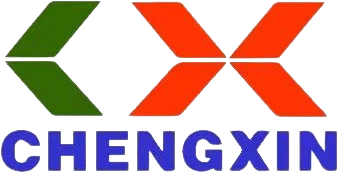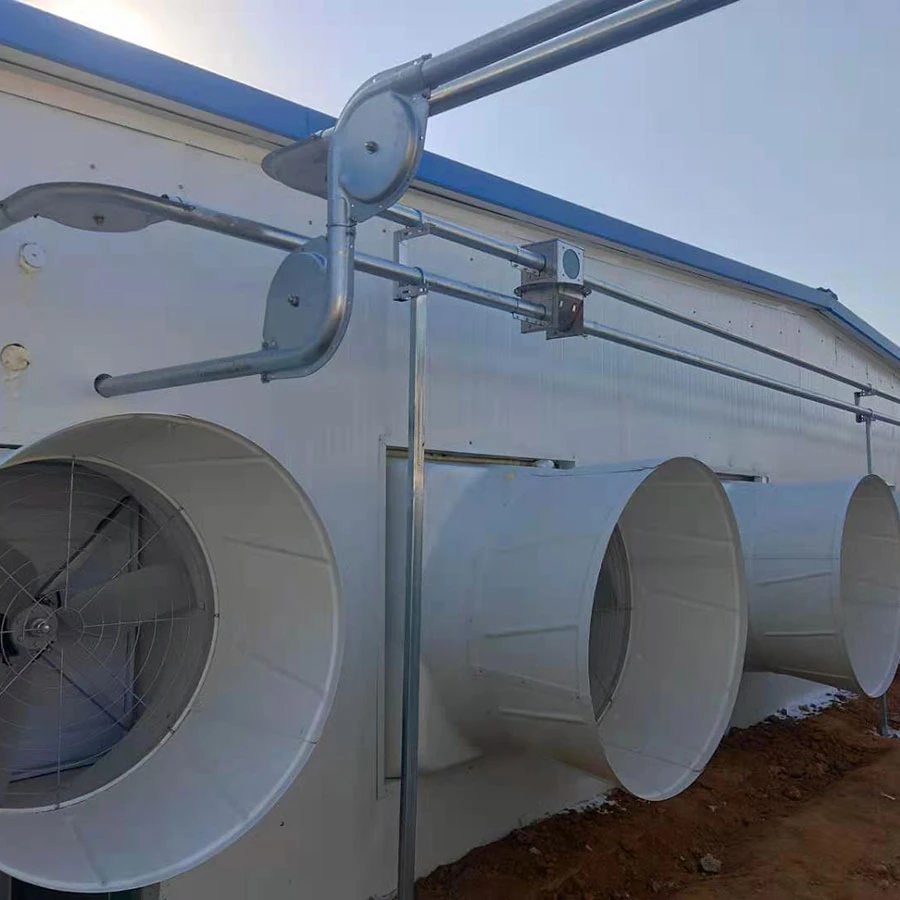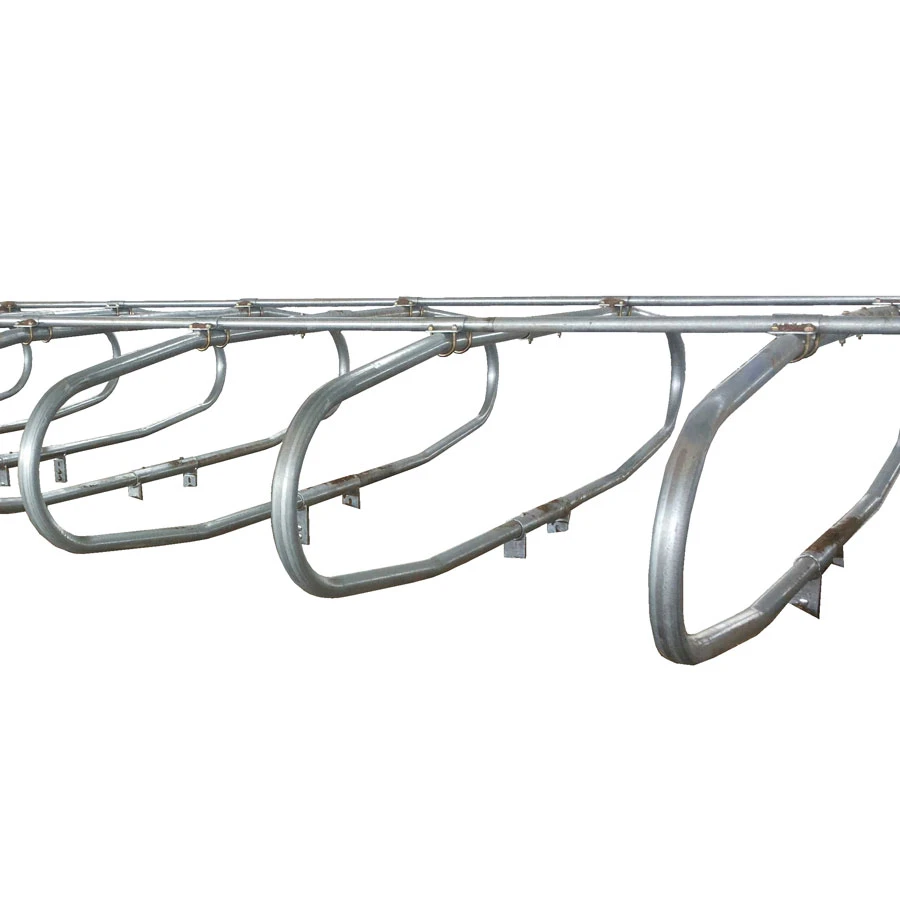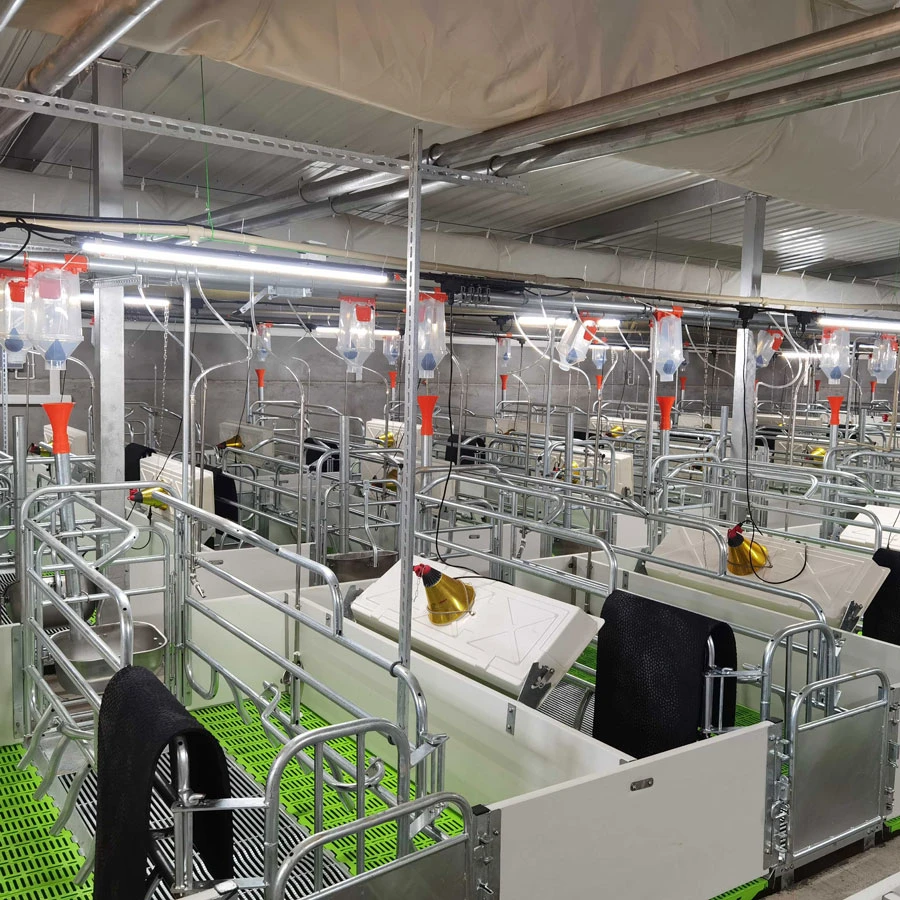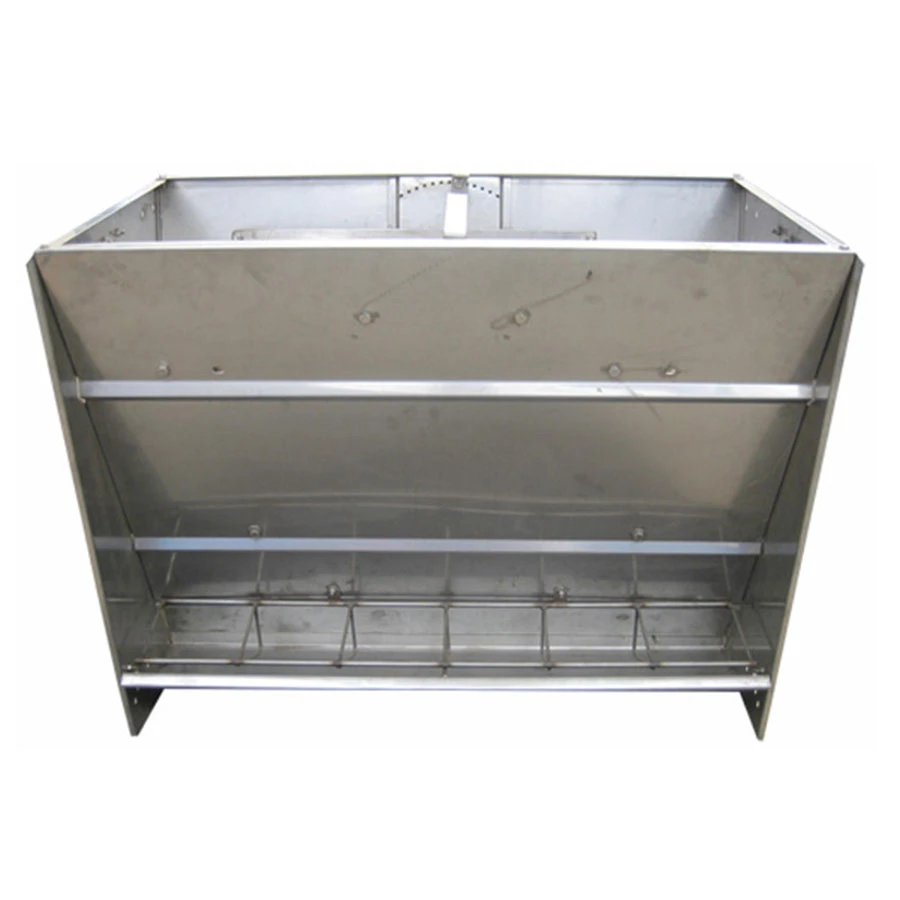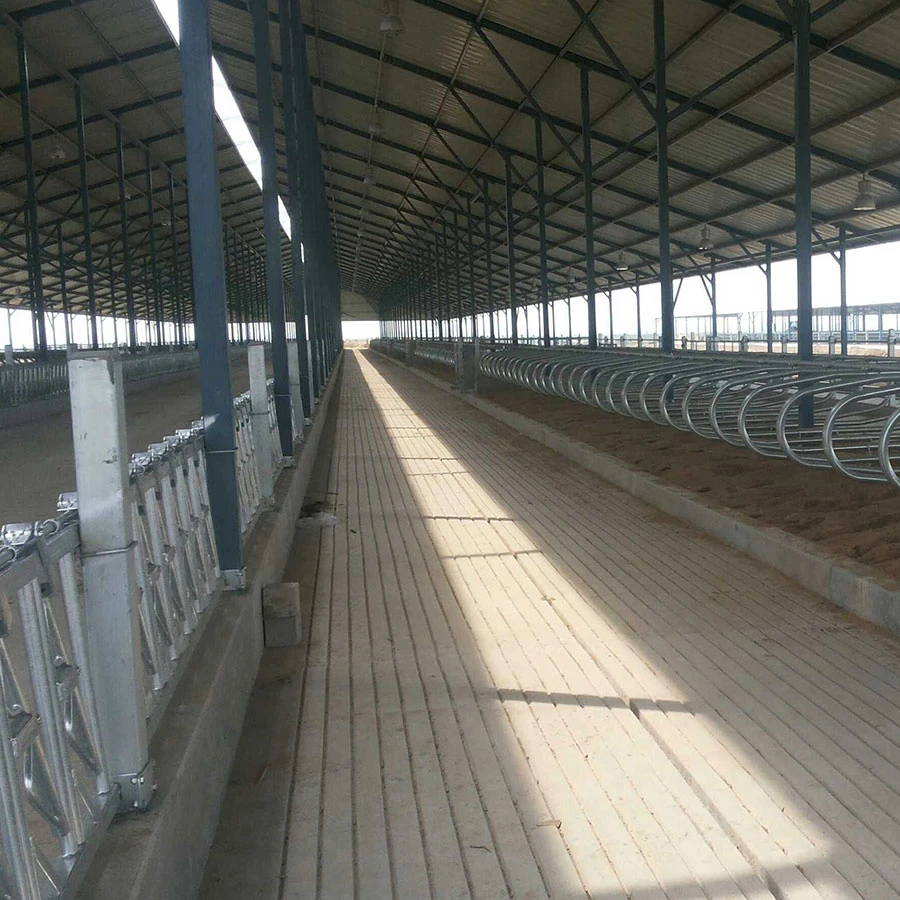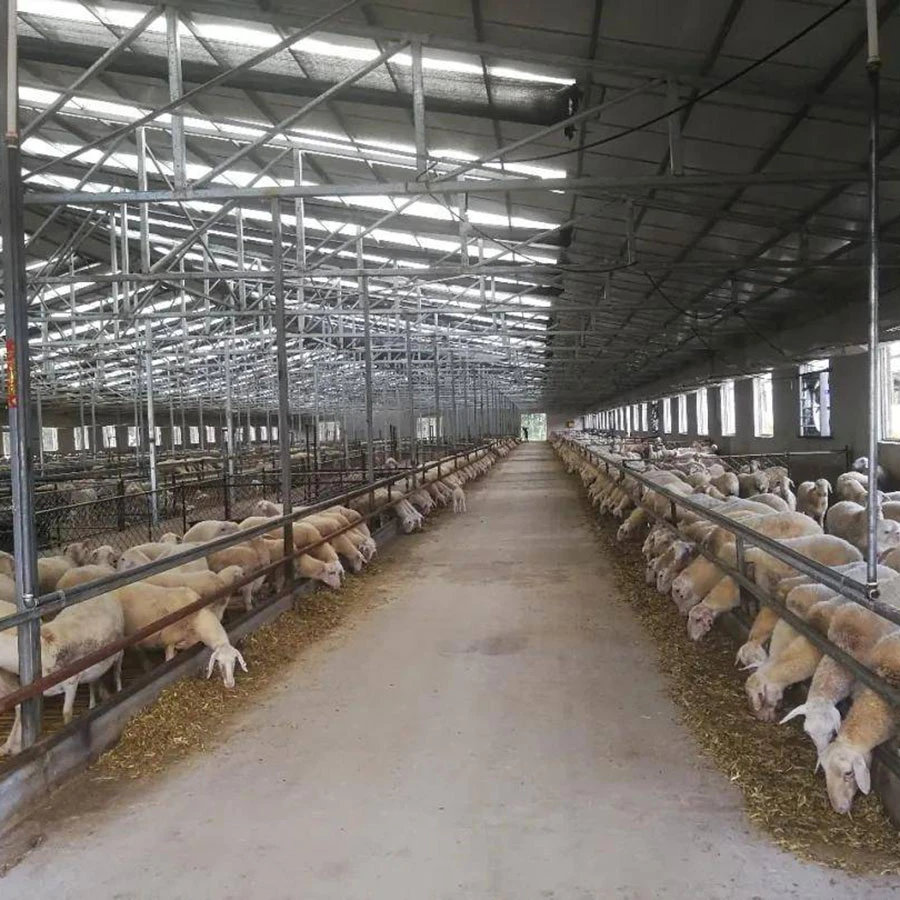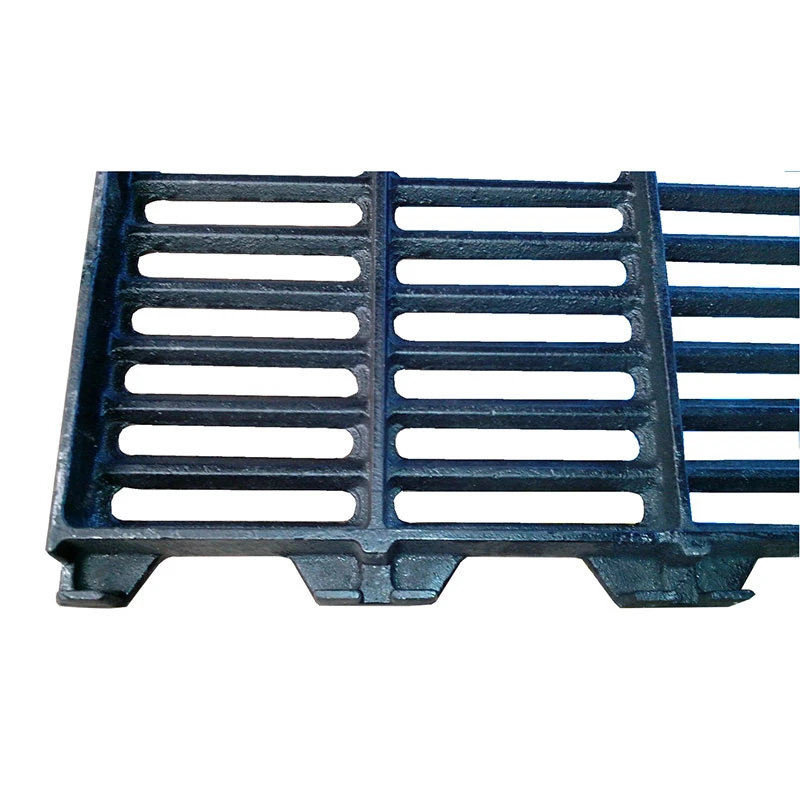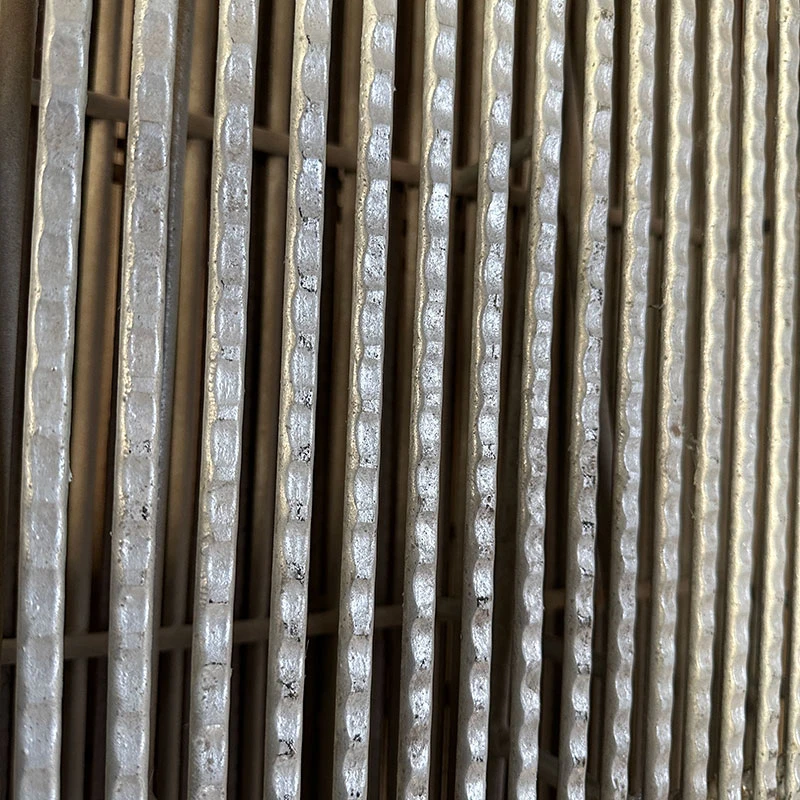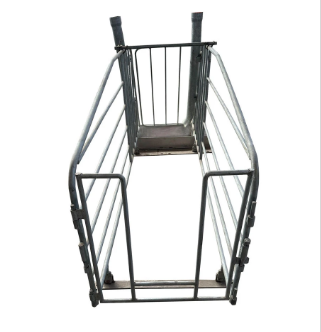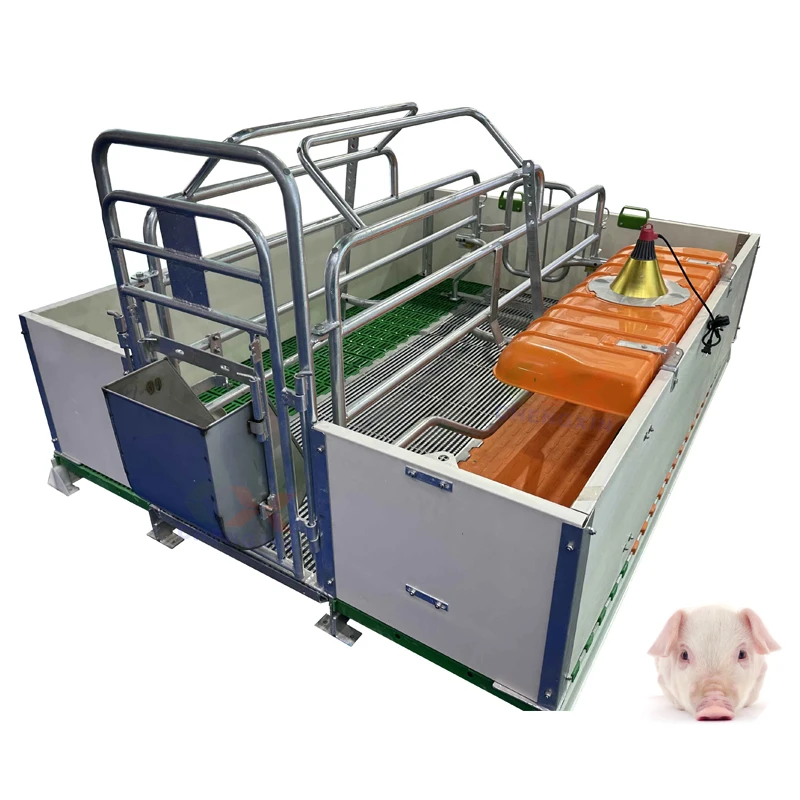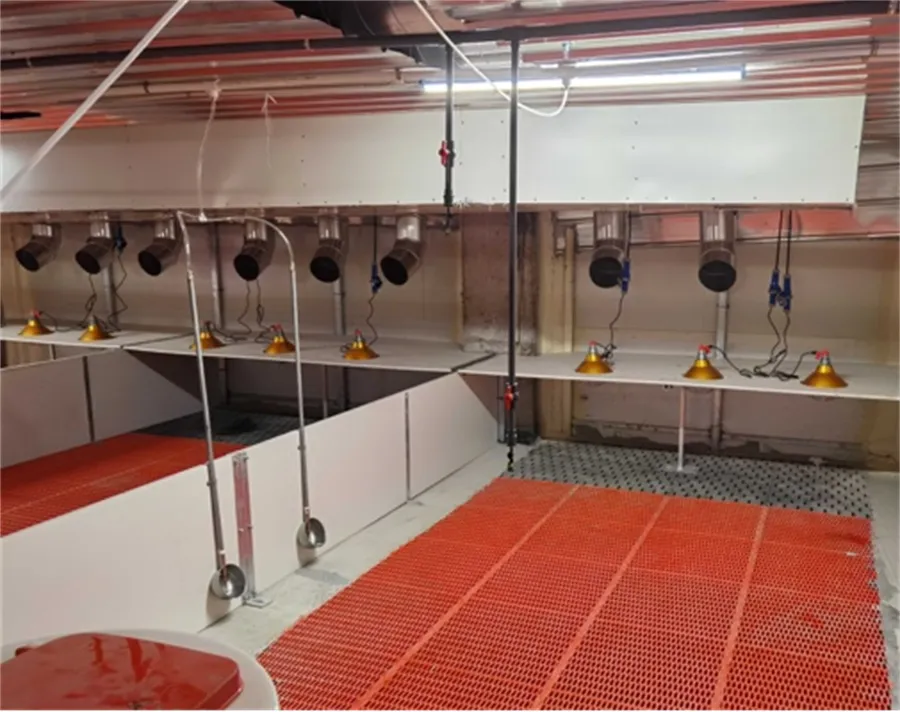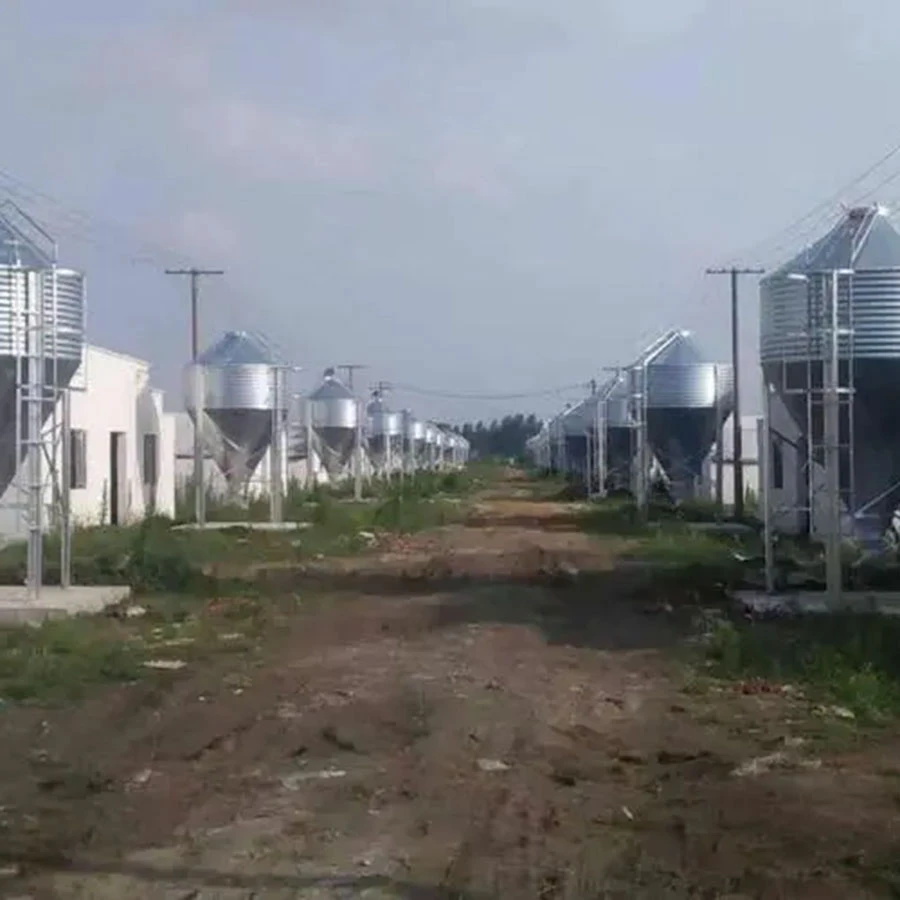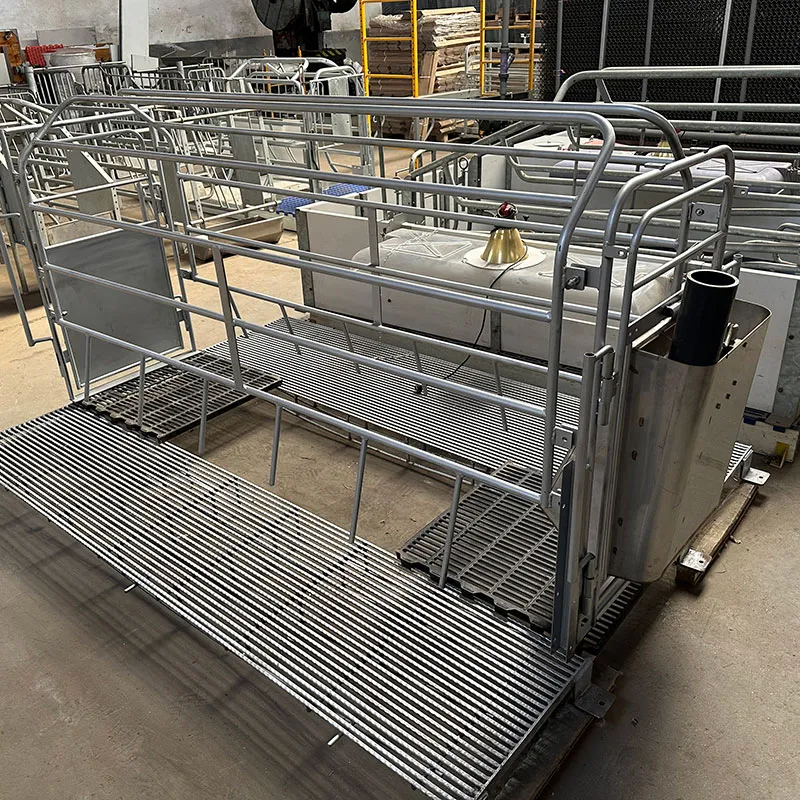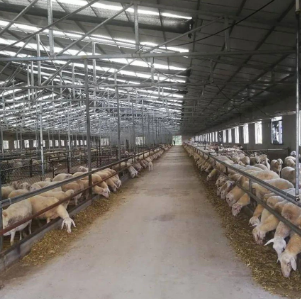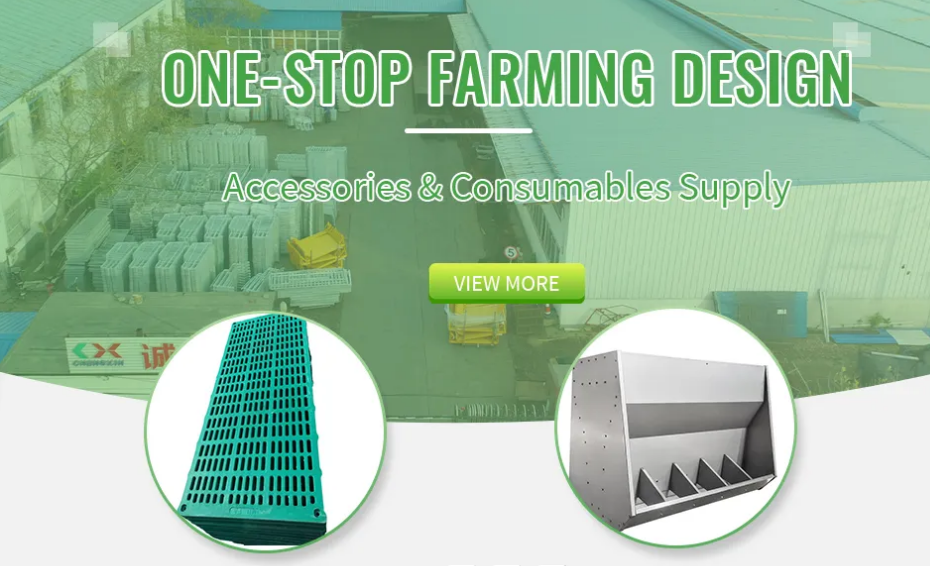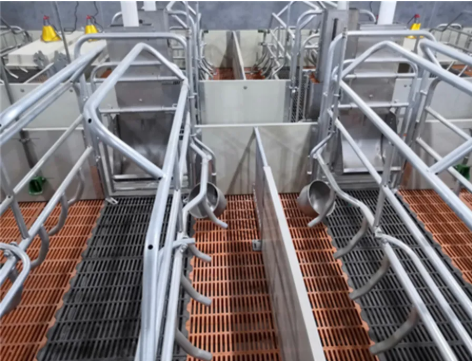The Strategic Role of Fattening Pens in Modern Swine Production
In high-efficiency swine operations, the design and functionality of housing infrastructure are paramount to achieving optimal growth rates and feed conversion ratios. Central to this is the fattening pen, a critical component engineered to support the final growth phase of pigs from approximately 25 kg to market weight. These specialized enclosures are meticulously designed to provide an optimal environment for rapid weight gain, emphasizing animal welfare, biosecurity, and operational efficiency. The strategic implementation of advanced fattening pen systems directly impacts profitability by minimizing stress, improving health outcomes, and streamlining management processes within large-scale commercial farms.
Modern fattening pens integrate robust construction with ergonomic design principles, catering to the specific needs of growing pigs. This includes considerations for space allocation, waste management, feeding systems, and environmental control. As the livestock industry increasingly focuses on sustainable and ethical practices, the evolution of fattening pen technology continues to incorporate innovations that enhance animal comfort while simultaneously boosting farm productivity.
Industry Trends in Swine Fattening Systems
The swine industry is undergoing a significant transformation driven by consumer demand for responsibly raised pork, stringent environmental regulations, and the perpetual pursuit of economic efficiency. Several key trends are shaping the development and adoption of advanced fattening pen solutions:
- Enhanced Animal Welfare: A growing emphasis on enriching pig environments has led to designs that offer more space, improved air quality, and options for behavioral expression (e.g., enrichment toys). Pens are now often designed with slatted floors to maintain hygiene while minimizing direct contact with waste.
- Biosecurity and Hygiene: The prevention of disease outbreaks is paramount. Modern pens feature materials that are easy to clean and disinfect, such as hot-dip galvanized steel and PVC. Automated cleaning systems and compartmentalized designs further reduce pathogen transmission risks.
- Automation and Precision Feeding: Integration with automated feeding systems ensures precise nutrient delivery, minimizing feed waste and optimizing feed conversion ratios. Smart sensors monitor temperature, humidity, and ventilation, providing an ideal growth environment and reducing manual labor.
- Durability and Longevity: Investment in high-quality, corrosion-resistant materials, particularly for components exposed to aggressive farm environments, ensures a longer service life and reduced maintenance costs. Hot-dip galvanization is a standard for steel components.
- Environmental Sustainability: Designs that facilitate efficient waste collection and separation contribute to better manure management, reducing environmental impact and allowing for resource recovery (e.g., biogas production).
Manufacturing Process Flow of Fattening Pen Components
The production of high-quality fattening pen systems involves a meticulously engineered process to ensure structural integrity, durability, and compliance with industry standards.
Key Materials and Their Advantages:
- Hot-Dip Galvanized Steel: Primarily used for penning panels, posts, and gate frames. This material offers exceptional corrosion resistance due to a zinc coating applied through immersion in molten zinc at approximately 450°C. This metallurgical bond provides superior protection against the corrosive ammonia-rich environment of pig farms, significantly extending service life beyond traditional painted or electro-galvanized steel.
- Polyvinyl Chloride (PVC) Panels: Utilized for solid pen partitions and some flooring sections. PVC is chosen for its smooth, non-porous surface, making it extremely easy to clean and disinfect, thereby enhancing biosecurity. It is also resistant to chemicals and moisture, providing excellent longevity.
- Cast Iron or Composite Slatted Flooring: Designed for efficient manure passage, keeping the pen floor dry and hygienic. Cast iron provides immense durability for high-traffic areas, while composite materials offer animal comfort and corrosion resistance.
- Stainless Steel: Used for critical components like fasteners, feeder troughs, and water nipples due to its superior corrosion resistance and hygiene properties, especially in contact with feed and water.
Manufacturing Processes:
- Material Preparation: Raw steel pipes and sheets are cut to precise dimensions using CNC laser cutting or plasma cutting machines, ensuring accuracy and minimizing material waste.
- Welding: Steel components are assembled and welded using MIG (Metal Inert Gas) or TIG (Tungsten Inert Gas) welding techniques, providing strong, durable joints. Robotic welding is often employed for consistency and efficiency in high-volume production.
- Surface Treatment (Hot-Dip Galvanization): After fabrication, steel components undergo a multi-stage cleaning process (degreasing, pickling, fluxing) before being immersed in molten zinc. This process creates a robust, uniform, and sacrificial protective layer, adhering to ISO 1461 standards.
- PVC Panel Extrusion/Molding: PVC panels are manufactured through extrusion, where molten polymer is pushed through a die to create the desired profile, or by injection molding for specific components.
- Component Assembly: Individual components are assembled, often using modular designs for easy on-site installation and future expansion. Quality control checks are performed at each stage.
Testing Standards and Service Life:
All components are manufactured and tested to comply with international standards such as ISO 9001 for Quality Management Systems. Material specifications often meet ASTM A123/A123M for hot-dip galvanized coatings and relevant DIN or EN standards for steel and plastics. These rigorous standards ensure product reliability and longevity. A well-maintained hot-dip galvanized steel fattening pen system can achieve a service life of 15-20 years, significantly reducing the total cost of ownership for farm operators.
Target Industries: Primarily focused on the livestock farming sector, specifically commercial pig breeding and finishing operations. These systems are crucial for farms ranging from medium-scale enterprises to large, industrial-level integrated swine production facilities.
Demonstrated Advantages in Typical Application Scenarios: The advanced manufacturing processes and material selection result in systems that offer superior energy saving (indirectly, through optimized growth conditions reducing feed input per kg of gain), exceptional corrosion resistance, and robust biosecurity. These attributes are vital in environments characterized by high humidity, fluctuating temperatures, and the presence of corrosive agents.
Technical Specifications and Parameters
A detailed understanding of the technical specifications of a fattening pen is crucial for effective farm planning and investment decisions. The following table outlines typical parameters for high-performance fattening penning equipment.
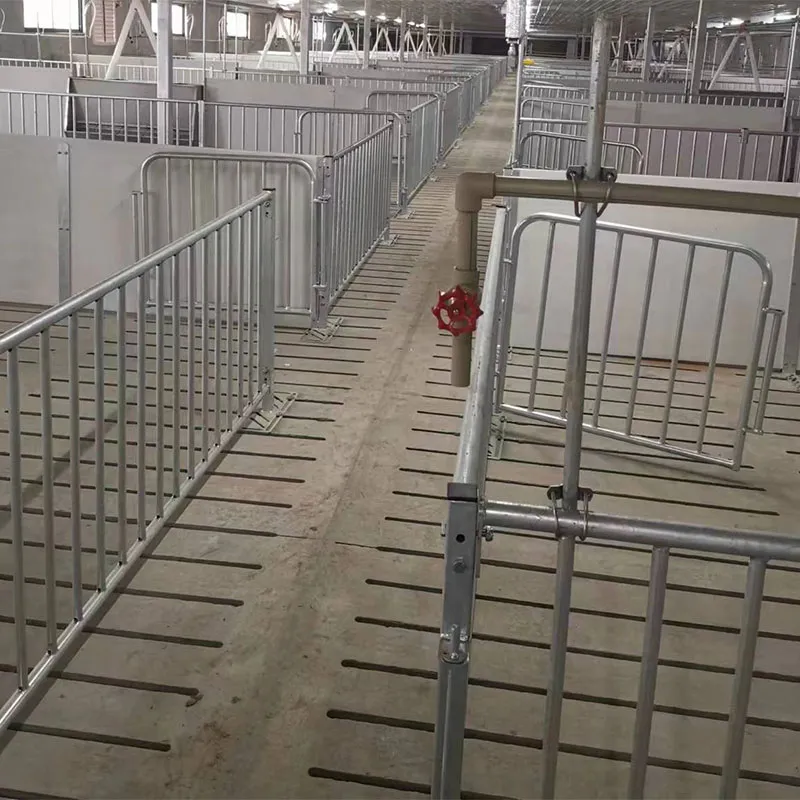
Product Specification Table: Fatten Finishing Penning System
Application Scenarios and Strategic Deployment
The versatility of modern fattening pen systems allows for their application across a diverse range of pig farming operations, from small-scale family farms transitioning to commercial models to expansive, fully integrated production complexes.
- Commercial Finishing Farms: These are the primary beneficiaries, requiring robust, scalable, and easy-to-manage penning solutions to house thousands of pigs simultaneously. Integration with automated feed delivery and climate control systems is common, optimizing resource utilization and labor efficiency.
- Wean-to-Finish Facilities: In these integrated setups, pigs move directly from weaning into larger pens where they remain until market weight. The design of the fattening pen must accommodate the growth trajectory, often with adjustable components or staged feeding mechanisms.
- Genetic Breeding Centers: While not for market pigs, these centers utilize similar pen designs for housing performance-tested boars or gilts during their growth phases, allowing for precise monitoring of feed conversion and growth rates under controlled conditions.
- Research and Development Facilities: University and corporate R&D units employ highly instrumented fattening pens to conduct trials on new feed formulations, genetic lines, or environmental control strategies, where consistent and standardized housing is critical for data accuracy.
- Biosecure Isolation Units: For incoming animals or those requiring observation, robust and easily disinfected fattening pens can be deployed in isolation zones, preventing potential disease spread to the main herd.
In each scenario, the modular design and customizable features of advanced fattening pens allow for seamless integration with existing farm infrastructure, including ventilation systems, waste lagoons, and automated feeding lines. This strategic deployment ensures maximum operational synergy and cost-effectiveness.
Technical Advantages and Operational Impact
The implementation of a high-quality fattening pen system yields significant technical and operational advantages for swine producers, directly impacting the bottom line and overall farm sustainability.
- Optimal Growth Environment: Precisely engineered dimensions and material choices ensure pigs have adequate space, ventilation, and hygiene, reducing stress and promoting consistent, rapid growth. This directly translates to improved feed conversion ratios (FCR), a key metric for profitability. Typical FCR for finishing pigs is around 2.5-3.0, but superior pen design can help achieve lower values, signifying greater efficiency.
- Enhanced Biosecurity and Disease Control: Non-porous, easily washable surfaces (PVC, galvanized steel) and effective slatted flooring minimize pathogen accumulation. This reduces the need for antibiotics and decreases mortality rates, safeguarding herd health and ensuring food safety.
- Durability and Reduced Maintenance: The use of hot-dip galvanized steel and robust PVC materials significantly extends the lifespan of the penning system, minimizing the frequency and cost of repairs or replacements. This provides a superior return on investment over lesser quality alternatives.
- Labor Efficiency and Ease of Management: Modular design facilitates quick assembly and disassembly for cleaning or reconfiguration. Ergonomically designed gates and feeders allow for easy access for feeding, health checks, and pig movement, reducing labor intensity and operational costs.
- Improved Animal Welfare: Beyond just growth, thoughtful pen design contributes to higher welfare standards, which is increasingly important for market access and consumer perception. This includes providing adequate space, preventing injuries, and enabling natural behaviors to the extent possible within a production environment.
Vendor Comparison and Selection Criteria
Choosing the right supplier for fattening pen equipment is a critical decision for any swine producer. A comprehensive vendor comparison should evaluate several key aspects beyond just initial cost.
Key Vendor Comparison Factors:
Customized Solutions for Diverse Operations
Recognizing that every farm operation has unique requirements, leading manufacturers offer highly customized fattening pen solutions. This adaptability ensures that the penning system integrates seamlessly with existing infrastructure and specific operational goals.
- Farm-Specific Layout Design: Tailored pen layouts optimize pig flow, space utilization, and manure management based on the barn dimensions, ventilation systems, and desired pig density. This includes adjustments for different herd sizes and growth strategies.
- Material Customization: While hot-dip galvanized steel and PVC are standard, options exist for specific applications, such as enhanced anti-corrosion coatings for extremely humid environments or specialized composite flooring for improved animal comfort.
- Integrated Feeding and Watering Systems: Customization extends to feeder types (e.g., dry, wet/dry, liquid feeding systems), and drinking solutions (e.g., nipple drinkers, bowl drinkers), seamlessly integrated into the pen structure to match farm automation levels.
- Advanced Environmental Controls: Custom solutions can incorporate precise temperature sensors, humidity controls, and automated ventilation systems, all managed through a centralized system to create an optimal microclimate within each pen.
For complex projects or new farm developments, a detailed pen fattening project proposal pdf is often developed. This document outlines bespoke pen designs, material specifications, integration plans, projected costs, and expected performance metrics, providing a comprehensive roadmap for successful implementation. This consultative approach ensures that the final solution is not just a product, but a strategic asset optimized for the client's unique business objectives.
Application Case Studies
Case Study 1: Large-Scale Commercial Swine Operation - "Evergreen Pork Farms"
Evergreen Pork Farms, an integrated swine producer in the Midwest, faced challenges with high mortality rates in their finishing barns and escalating maintenance costs from corroded penning. They sought a solution to improve animal health, reduce labor, and extend equipment lifespan.
- Solution Implemented: Installation of 2,500 units of advanced fattening pen systems featuring hot-dip galvanized steel frames, full PVC partitions, and wet/dry feeders, integrated with a central liquid feeding system and automated ventilation.
-
Results:
- 20% reduction in mortality rates over 12 months.
- Improved average daily gain (ADG) by 8%, leading to a 5-day reduction in time to market weight.
- Estimated 15% reduction in feed consumption per kilogram of gain (FCR improvement).
- Projected equipment lifespan extended by 10+ years compared to previous systems.
Case Study 2: Medium-Sized Family Farm - "Maple Creek Swine"
Maple Creek Swine, a family-owned operation aiming to expand capacity and modernize their facilities, struggled with outdated wooden pens that posed biosecurity risks and were difficult to clean.
- Solution Implemented: Customized installation of 300 modular fattening pens with galvanized steel partitions, plastic slatted flooring, and integrated nipple drinkers. The layout was specifically designed to fit existing barn structures.
-
Results:
- Significant improvement in farm hygiene and biosecurity protocols.
- 40% reduction in weekly cleaning time due to easy-to-clean materials.
- Increased pig comfort, resulting in fewer behavioral issues and injuries.
- Enabled a 25% increase in herd size without compromising animal welfare standards.
Frequently Asked Questions (FAQ)
Q1: What is the typical lifespan of your fattening pen systems?
A1: Our hot-dip galvanized steel and robust PVC components are engineered for longevity, typically providing a service life of 15 to 20 years under proper maintenance and normal operating conditions. The thick zinc coating (min. 80µm) on our galvanized steel ensures superior corrosion resistance.
Q2: Can your fattening pens be customized for specific barn dimensions or pig densities?
A2: Absolutely. We specialize in customized solutions. Our modular design allows for flexible configurations to match your existing barn layout, desired pig density, and specific operational requirements. We provide detailed design consultations and project proposals.
Q3: What maintenance is required for your fattening pen equipment?
A3: Our pens are designed for low maintenance. Regular cleaning and disinfection are recommended to maintain hygiene. Periodic checks for fastener tightness and wear on moving parts (e.g., gate hinges) are sufficient. The corrosion-resistant materials significantly reduce the need for repainting or extensive rust treatment.
Q4: How do your pens contribute to better animal welfare?
A4: Our designs prioritize adequate space per pig, optimal flooring for comfort and hygiene, and accessible feeding/watering systems. This minimizes stress, reduces injuries, and allows for more natural behavior, leading to healthier and more productive animals, in line with modern animal welfare guidelines.
Lead Time, Warranty, and Customer Support
Lead Time & Fulfillment:
Our standard lead time for typical orders of fattening pen systems ranges from 4 to 8 weeks, depending on the volume and level of customization. Expedited options may be available upon request. For large-scale projects, detailed fulfillment schedules are provided as part of the project proposal, ensuring timely delivery and coordination with your construction timeline. We manage global logistics to ensure efficient and secure delivery to your facility.
Warranty Commitments:
We stand by the quality and durability of our products. All our fattening pen components are backed by a comprehensive 5-year warranty against manufacturing defects and material failures under normal use. Specific components, such as hot-dip galvanized steel, may carry extended guarantees for corrosion resistance. Detailed warranty terms are provided with every quotation.
Customer Support:
Our commitment extends beyond product delivery. We offer robust after-sales support including:
- Technical Assistance: A dedicated team of experts is available to provide guidance on installation, operation, and maintenance.
- Spare Parts Availability: A comprehensive inventory of spare parts ensures rapid replacement and minimal downtime.
- Consultation Services: Ongoing advisory services to help optimize your farm layout and operational efficiency.
Conclusion
Advanced fattening pen systems are indispensable for modern swine production, offering a potent combination of durability, hygiene, and operational efficiency. By investing in high-quality, technically superior penning solutions, producers can significantly enhance animal welfare, optimize growth rates, reduce disease incidence, and achieve a more sustainable and profitable farming operation. The strategic selection of a reputable vendor and customized solutions ensures that these systems become a foundational asset for long-term success in the competitive livestock industry.
References
- ISO 9001:2015 Quality management systems — Requirements. International Organization for Standardization.
- ASTM A123/A123M-17, Standard Specification for Zinc (Hot-Dip Galvanized) Coatings on Iron and Steel Products. ASTM International.
- Animal Welfare in Pig Production: Recent Advances and Future Perspectives. Journal of Animal Science, 2021.
- Sustainable Pig Production: A Review of Housing Systems and Environmental Impacts. Livestock Science, 2020.
- Feed Efficiency and Growth Performance in Swine: The Role of Housing and Management. Journal of Swine Health and Production, 2019.
Post time: Aug . 27, 2025
